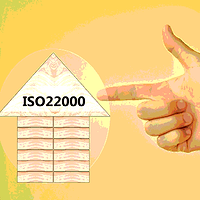Updates for ISO 22000: What You Should Know

The update of ISO 22000 food safety management system was anxiously awaited by many food safety professionals. It was originally published in 2005 and the update was a long process. It started back in November 2014 (proposal stage), led to the release of the Final Draft International Standard in February 2018, and the new standard was finally published in June 2018.
The latest statistics from companies certified by this management system show its continuous growth since 2007, reaching over 32,000 in 2017. When compared with other certification programs, such as Global Food Safety Initiative-recognized schemes, such as FSSC 22000, IFS, and BRC, ISO reported the highest number of certifications during 2017. Since FSSC 22000 is also an ISO-based standard, it is clear how relevant and well accepted this standard is by the food industry.
In the new version, the different subjects addressed by the standard are organized according to their position in the PLAN-DO-CHECK-ACT (PDCA) cycle. This clarifies most of the clauses that have changed place, for instance:
1. The topic on the competence of the food safety team and how it is appointed that was presented inside Hazard Analysis and Critical Control Points (HACCP) clause 7 (2005 version), moved to clause 5.3 (Organizational roles, responsibilities and authorities) and clause 7.3 (Competence), since it is a PLAN activity, and not a DO activity.
2. Emergency preparedness and response jumps from clause 5.7 (2005 version) to clause 8 (Operation); this is the DO clause according to the standard.
3. Management review leaves the Management Responsibility (clause 5) of the 2005 version to the CHECK step of the cycle (clause 9 of the new version).
Despite of the fact that in the cases of points 2 and 3 presented above, the subjects are no longer under a clause that included all the Management responsibilities (in the last version), top management is still accountable for these issues in the new version.
Easily noticeable in the new introduction is that, regarding food safety management system principles, they retain the key elements of ISO 22000:2005:
• Interactive communication
• System management
• Prerequisite programs
• HACCP principles
However, they add the main principles that are common to all other ISO standards:
• Customer focus
• Leadership
• Engagement of people
• Process approach
• Improvement
• Evidence-based decision making
• Relationship management
Another interesting aspect is the meanings of some of the main verbal forms used (“shall,” “should,” may,” and “can”) are clarified.
In the introduction, the new version promotes the adoption of a process approach in the development and implementation of the food safety management system. This process approach is subdivided into a PDCA cycle and risk-based thinking. The concept of PDCA cycle, although not addressed in ISO 22000:2005, is not new for the system, being included into ISO 22004:2014 (Guidance on the application of ISO 22000). But now, there is a twist since this new version distinguishes between a PDCA for the organizational planning and another for the operational planning, being the control of communication between the two cycles essential. The risk-based thinking is only briefly mentioned as it has always been a characteristic of HACCP. Nevertheless, it should also be used in the organizational planning and control (i.e., also in all the system clauses besides #8).
The last section of the introduction uncovers the relationship with other management system standards and explains that the document was developed within the ISO high-level structure to improve alignment between the ISO management system standards. This can be clearly seen as, for instance, the new ISO 22000 has the same structure and even the same main clause numbers and names as ISO 9001:2015.
Food safety systems are important and, when well adopted, are excellent tools to guarantee food safety. Nevertheless, we can find places around the world where some of the most basic food safety principles are not met. Understanding more about global standards is a step toward addressing these important issues.
In our next eDigest, the main changes in clauses 4 through 10 of ISO 22000:2018 will be presented.
Nuno F. Soares, Ph.D., is an author, consultant, and trainer in food safety. He has over 20 years experience in food industry as quality and plant manager. He is the author of "ISO 22000:2018 Explained in 25 diagrams."
Looking for a reprint of this article?
From high-res PDFs to custom plaques, order your copy today!








